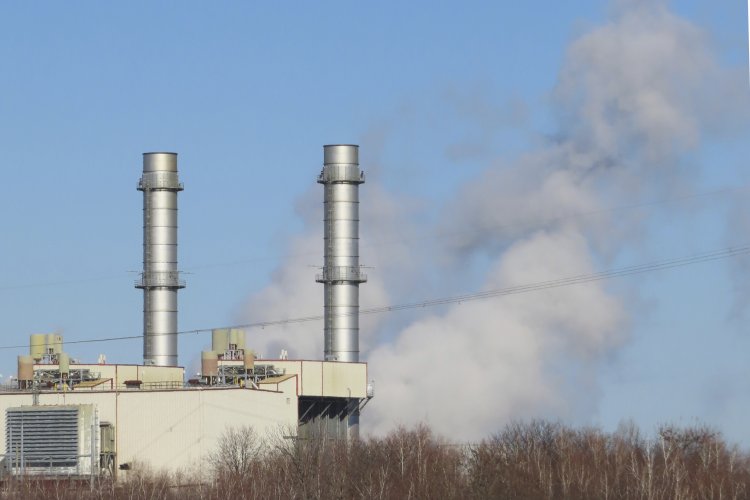Democrats Have a New Villain: A Power Player Unknown to You
PJM is recognized among energy experts as the entity responsible for managing the power market and electric grid across 13 states and Washington.

Consumers across a substantial portion of the country are about to experience significantly higher utility bills, partially due to the actions of PJM, a little-known organization that manages the electric grid across 13 states and Washington, D.C.
In response to rising power prices, blue state officials are attempting to make PJM a target for political criticism.
Governors and legislative Democrats in cities like Annapolis, Harrisburg, and Trenton have not held back in their critiques of PJM, an organization primarily responsible for ensuring that there is adequate power available in the region.
State Sen. Bob Smith, who leads a New Jersey committee overseeing energy policy, remarked that constituents are looking to vent their frustrations on anyone they perceive as responsible for the anticipated $25 monthly increase in their bills.
Democrats in New Jersey and other states aim to position PJM as the source of voter dissatisfaction. While President Donald Trump, known for his opposition to clean energy initiatives that blue states were depending on, also receives some criticism, Democrats appear eager to elevate PJM—relatively unknown to the general public—into a villainous role.
During a recent call-in show, New Jersey Gov. Phil Murphy addressed a question about rising bills and quickly pivoted to a critique of PJM.
“We’re going to be driving this hard,” he pledged.
Although PJM has faced criticism in the past, the current wave of discontent represents one of the most severe in its history. The controversy began last summer when PJM held an auction to procure power for its customers. As a result, wholesale power prices surged, increasing tenfold and leading to significant rate hikes anticipated to begin this June, with some users facing increases of up to 35 percent.
Democratic governors were quick to react after the auction.
Pennsylvania Gov. Josh Shapiro, along with Illinois Gov. JB Pritzker, Maryland Gov. Wes Moore, and Murphy, united to voice their frustrations.
Shapiro is particularly notable for being the first governor to vigorously challenge PJM, formally filing a complaint with federal energy regulators that claimed PJM was responsible for “potentially the largest unjust wealth transfer in the history of the U.S. energy markets.” PJM's primary functions include planning the infrastructure linked to the regional power grid and overseeing the auction process to ensure sufficient power for the 67 million people in its coverage area.
Shapiro contended that PJM does its job inadequately: although power plants are expected to compete to provide energy, PJM has been slow to permit new power plants, allowing energy companies to charge high rates without facing genuine competition. He scored an early success when PJM agreed in January to put a cap on prices for its subsequent auctions.
Despite this, the backlash against PJM has intensified, particularly in New Jersey, where the organization has become a prime target for criticism.
New Jersey’s ratepayer advocate Brian Lipman asserted that “people will die” as a result of higher prices, and he is not even among PJM’s most vociferous critics in the state.
Incumbent state lawmakers, many facing election this year, have conducted two hearings largely dedicated to condemning PJM, throwing accusations of incompetence and unproven allegations of corruption.
Cost of living is shaping up as a critical issue for the state’s upcoming June primary and fall general elections, with at least two Democrats in the gubernatorial race taking aim at PJM. Steve Sweeney denounced PJM’s “unfair business practices,” while Rep. Mikie Sherrill highlighted grid issues in her affordability agenda.
Even New Jersey's congressional delegation has become involved, with Reps. Frank Pallone and Rob Menendez, both Democrats, criticizing PJM CEO Manu Asthana during his appearance before a House committee in late March.
However, it remains uncertain whether voters are aware of PJM’s existence, let alone holding it accountable.
PJM is defending its position.
“We don’t just, like, hang out in Pennsylvania and do what we want,” PJM senior vice president Asim Haque told New Jersey lawmakers recently.
The organization’s name reflects its origins, as it originally encompassed Pennsylvania, Jersey, and Maryland, which collaborated to share electricity decades ago. Over the years, PJM has expanded to incorporate areas in Appalachia, the mid-Atlantic, and the Midwest.
Currently, many states depend heavily on PJM’s market for their residents’ power needs, which is typically regarded as beneficial, offering a competitive power market across a broad region.
However, critics argue that a fundamental process at the core of PJM has faltered in recent years. It's become increasingly difficult for energy companies to establish new power plants, resulting in a supply decrease as demand is projected to grow, particularly due to energy-guzzling artificial intelligence data centers being planned nationwide.
PJM must analyze and approve energy projects before they can connect to the grid and sell power, whether these are large gas-fired plants or smaller solar farms. The associated studies are complex and can take years. Additionally, if a pending project falls through, PJM may need to re-evaluate other projects, leading to a cascade of delays.
In a time when only a small number of large gas or coal power plants were under consideration, this issue was manageable. But with thousands of projects, mainly solar farms, requiring intense review, PJM now finds itself burdened with a significant backlog, stalling numerous energy supply initiatives. At one point, PJM halted new application processing altogether.
PJM claims it is working to reform this approval process to expedite numerous energy supply projects. The organization argues that some of the past projects that were not completed were “speculative projects” or failed due to factors outside its control, including broader supply chain and economic challenges and local permitting issues.
PJM also mentions that “decarbonization policies have driven resources off of the system," referencing clean energy initiatives—particularly in blue states—that resulted in the shutdown of older coal and gas plants, thereby hindering the development of new gas facilities.
Gov. Murphy has invested years in making New Jersey's energy supply reliant on offshore wind projects, many of which are now stalled or abandoned.
In PJM’s view, the issues manifest during a period when healthy levels of supply existed; demand was stable, allowing prices to remain low. However, as demand is now on the rise, prices have surged amid a supply-demand imbalance.
“What we’re now seeing is a major uptick in demand; there’s no real wiggle room,” Haque testified.
New Jersey Republicans are leveraging such comments to argue that the true problem lies not with PJM but with Democrats’ single-minded focus on clean energy initiatives.
In a statement, PJM noted that New Jersey’s offshore wind endeavors “are a prime example of New Jersey’s dilemma.” The state's energy strategy depended heavily on offshore wind, which ultimately did not materialize.
“That is not New Jersey’s fault, but it has nothing to do with PJM,” the organization asserted.
Democratic Maryland Delegate Lorig Charkoudian has been advocating for awareness of PJM since her entry into the Legislature in 2019. She expressed that PJM has been slow to adapt to the clean energy plans outlined by states like Maryland.
Now that there is a crisis, Charkoudian believes PJM is redirecting blame onto those who have issued warnings.
“The overall strategy of PJM is to show up and tell us we’re the one who made the mistake, not them,” she said.
During testimony before New Jersey lawmakers, PJM’s executive director, Jason Stanek, cited part of the problem as being the result of local opposition to power plants and suggested, among other things, relaxing permitting requirements for electrical infrastructure so that communities could not obstruct construction in their backyards.
In congressional testimony, Asthana stated that PJM had taken significant steps to aid New Jersey in preparing for offshore wind farms and subsequently criticized the state for relying on that power, which has yet to become a reality.
"Now, the problem is, there's not one turbine spinning,” the PJM CEO noted.
However, the backlog at PJM has also delayed projects unrelated to clean energy.
According to Abe Silverman, a former general counsel for the New Jersey Board of Public Utilities who is now a researcher at Johns Hopkins University, the last new gas-fired plant submitted for PJM study began its process in 2016. This raises concerns for politicians eager to develop new gas facilities with the hope of stabilizing prices, as PJM’s bottlenecks do not promise a quick resolution.
Silverman argues that PJM should have anticipated the current issues and responded proactively. Instead, he believes it has defended itself while struggling to navigate ongoing challenges.
"The interconnection queue has been a hot mess," he stated.
Some regulators in Republican-led states have also voiced criticisms toward the agency, albeit with less intensity and often for different reasons. Residents in these states are also experiencing increased prices—e.g., some residents in Ohio are expected to see increases of 35 percent.
This situation is partly partisan but also stems from historical decisions regarding utility regulation. Some states governed by Republicans remain insulated from PJM’s price fluctuations because their utilities continue to own power generation assets, unlike states like West Virginia.
All of PJM's challenges arrive at a particularly crucial moment. Demand is set to escalate due to the rise of data centers. Embedded within the critiques of PJM is a concern that the U.S. could fall behind in an AI arms race, partly due to the inefficiencies of its power system.
Waiting five years or more for project approvals can jeopardize the viability of many new power initiatives.
Clean energy projects that previously awaited PJM's endorsement may be rendered obsolete with Trump's presidency. Yet, the same delays could prove problematic for gas facilities if a climate-centric Democrat assumes office in the future.
“If they can't be built in four years, they have such a high risk from political interference,” remarked Julia Kortrey, a former economic development official in New Jersey currently affiliated with Evergreen Action, a nonprofit focused on climate issues and critical of PJM.
Anna Muller for TROIB News












